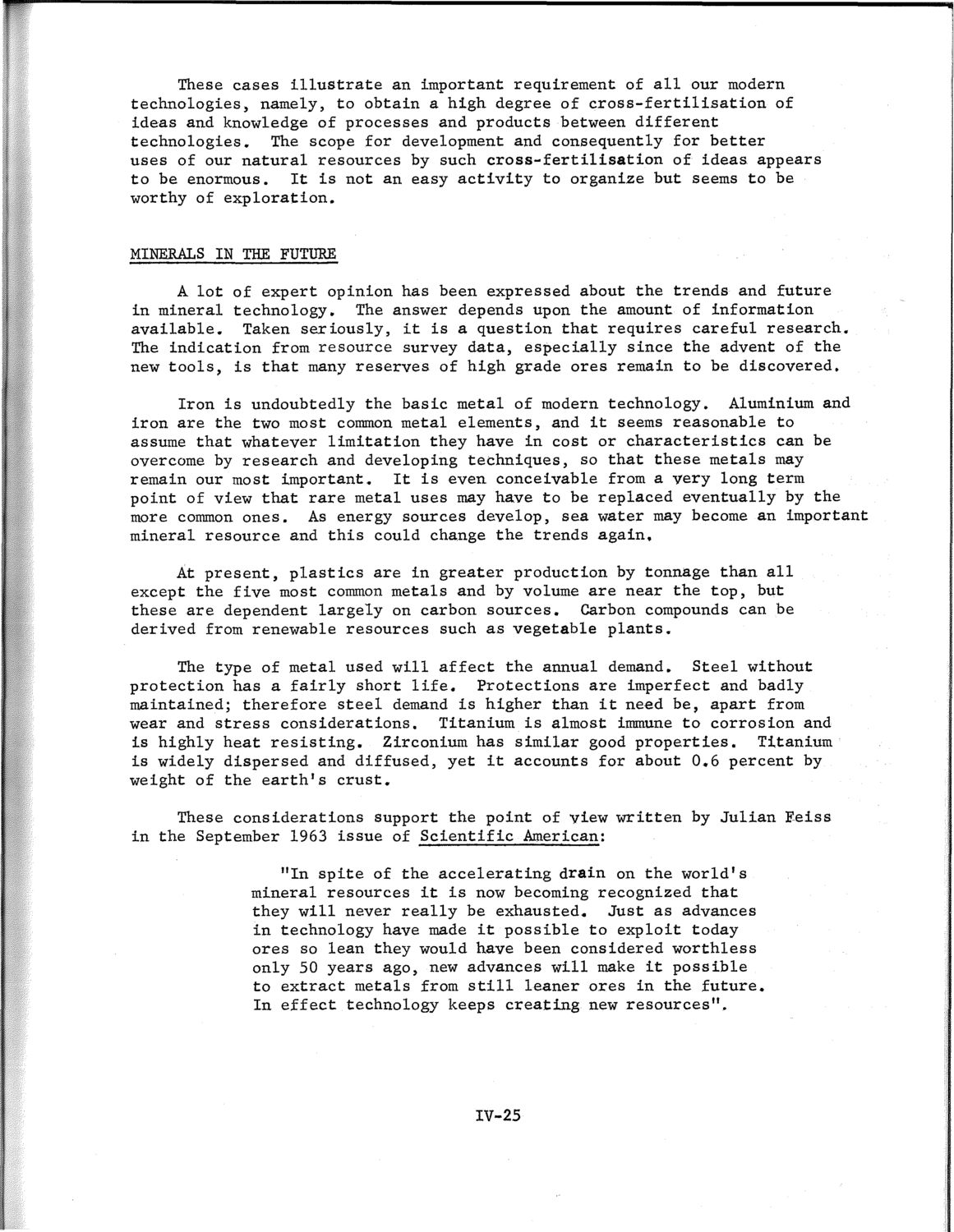| |
| |
Caption: SWE - Proceedings of the First International Conference of Women Engineers and Scientists
This is a reduced-resolution page image for fast online browsing.

EXTRACTED TEXT FROM PAGE:
These cases illustrate an important requirement of all our modern technologies, namely, to obtain a high degree of cross-fertilisation of ideas and knowledge of processes and products between different technologies. The scope for development and consequently for better uses of our natural resources by such cross-fertilisation of ideas appears to be enormous. It is not an easy activity to organize but seems to be worthy of exploration. MINERALS IN THE FUTURE A lot of expert opinion has been expressed about the trends and future in mineral technology. The answer depends upon the amount of information available. Taken seriously, it is a question that requires careful research. The indication from resource survey data, especially since the advent of the new tools, is that many reserves of high grade ores remain to be discovered. Iron is undoubtedly the basic metal of modern technology. Aluminium and iron are the two most common metal elements, and it seems reasonable to assume that whatever limitation they have in cost or characteristics can be overcome by research and developing techniques, so that these metals may remain our most important. It is even conceivable from a very long term point of view that rare metal uses may have to be replaced eventually by the more common ones. As energy sources develop, sea water may become an important mineral resource and this could change the trends again. At present, plastics are in greater production by tonnage than all except the five most common metals and by volume are near the top, but these are dependent largely on carbon sources. Carbon compounds can be derived from renewable resources such as vegetable plants. The type of metal used will affect the annual demand. Steel without protection has a fairly short life. Protections are imperfect and badly maintained; therefore steel demand is higher than it need be, apart from wear and stress considerations. Titanium is almost immune to corrosion and is highly heat resisting. Zirconium has similar good properties. Titanium is widely dispersed and diffused, yet it accounts for about 0,6 percent by weight of the earth's crust. These considerations support the point of view written by Julian Feiss in the September 1963 issue of Scientific American: "In spite of the accelerating drain on the world's mineral resources it is now becoming recognized that they will never really be exhausted. Just as advances in technology have made it possible to exploit today ores so lean they would have been considered worthless only 50 years ago, new advances will make it possible to extract metals from still leaner ores in the future. In effect technology keeps creating new resources". IV-25
| |